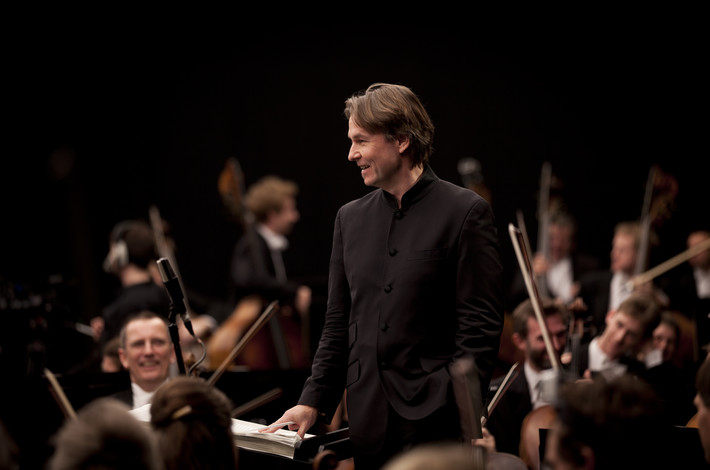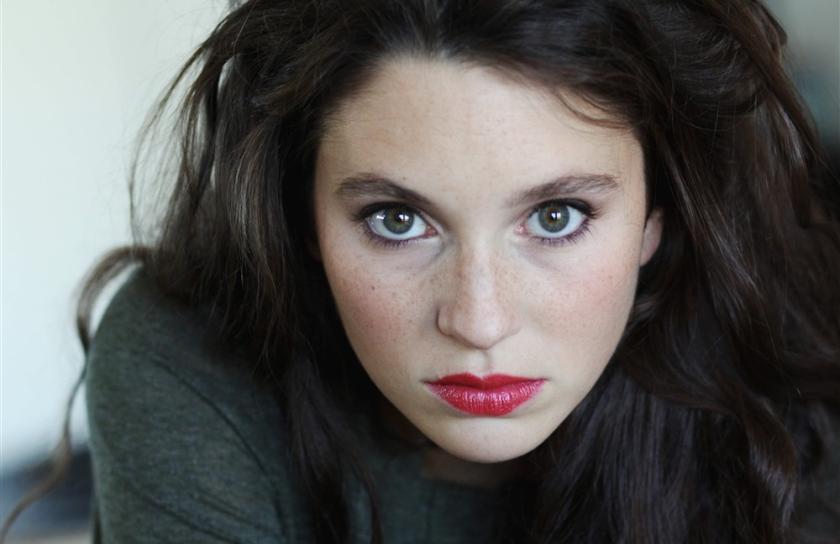Stravinsky's music, chameleonic yet always itself, offers so many lines of thought. One struck me immediately with the descending, even harp notes and tender, veiled strings at the start of his 1947 ballet Orpheus last night: the inexorable beat of time is so often pitted against an expressive, human voice. Esa-Pekka Salonen, who started out as a rhythm and textures man, now gets the humanity too. This triptych of three Greek myths startlingly revisited offered other dualities, giving him and the Philharmonia the chance to move constantly between heaven, hell and somewhere in between.
It’s the joy of all-Stravinsky programmes – and this is the fourth major event in an ambitious 2016 festival – that so many alternative groupings are possible. The final work of last night’s “Myths” could have been the last ballet, Agon (already featured) or Oedipus Rex (to come on Thursday). That it was a sometimes overshadowed masterpiece, Perséphone, no doubt made for the best transcendence of all. Both Orpheus and Apollon musagète have their apotheoses, cool and ultimately a bit troubling; though Perséphone ends with a similar question mark, its Part Three Rite of Spring, with a tear-jerking khorovod (round dance) for celebrants of the Eleusinian mysteries followed by a blaze of triadic light was certainly the emotional high-point of the evening.

Each work had them, in terms of energy and volume: Salonen (pictured above by Benjamin Ealovega) upped the stakes in the racy Coda for Apollo and the Muses in Stravinsky’s first collaboration with equal genius Balanchine, and for the Maenads tearing bereaved song-master Orpheus limb from limb. Such great blazes were all the more bracing for the exquisite understatement Salonen applied to their contexts. Again the highlights, thanks to Stravinsky’s often undervalued gift for original and unexpected melody, were obvious.
The core of Orpheus is his dance-song for Hades’ tormented inhabitants, a homage to Bach’s cantatas and passions which is typically spare – perhaps the reprise shared between Jill Crowther’s cor anglais and harpist Heidi Krutzen, the dominant colourist of the work, was even more ineffable than the initial duet for two oboes – and the brief string light of Orpheus’ Pas de deux with Eurydice (you may well ask how he dances with her if he’s leading her away from Hades and not looking back; the answer is that Balanchine has him blindfold). Apollo’s cooler duet with Terpsichore was rendered magical by the varied cello refrains, so poised, and in Perséphone the professional Philharmonia Voices made coolly ravishing work both of Euridice’s pastel companions and of the simple chorus of shades (Stravinsky called it “Lullaby for Vera”, his adored second wife).

Word music brought a bigger dimension to the last work, not just from the chorus, joined by Tiffin Boys in the enchating final ritual, and from clarion tenor Andrew Staples (pictured above), almost Mephistophelian or Quint-like as ritual guide Eumolpus guides Perséphone into darker corners, but above all from the melodrama-recitation of Pauline Cheviller. When have you ever seen a concert Perséphone where the heroine is young and beautiful – Ida Rubinstein was certainly not the former when she recited at the premiere - and acts out every emotion even when she’s not singing? Score-free – she has sung the role in Peter Sellars’ production – Cheviller made you feel from the start the apartness and the special quality of Perséphone’s compassion which takes her to the underworld. She wrought magic from what Stravinsky called André Gide's "caramel" verses. If she had to be miked, so be it, to catch the finer nuances (the final world of love to her consort on earth, Triptolemus, was unforgettable).
Sonically, no voice or instrument had a strand wrong or out of place; visually, the supporting pleasure was just as classy. Salonen has long espoused supertitles for dance movements – such a help, for example, in Bartok’s The Miraculous Mandarin. Here they were complemented by the poetic lighting of Sellars’ collaborator Seth Reiser. He gave us shades of darkness for Orpheus, golden light for Apollo’s brightest moments and even a pomegranate hue in a differently-lit Persephone. The imagination was fired but not overwhelmed by the total works of art. Maybe there’s no substitute for Balanchine’s ineffable choreographies, but here everything supported a rare musical perfection. Don't miss Oedipus Rex on Thursday, with the same light-feast promised, and Cheviller as narrator.
- Final concert in Stravinsky: Myths and Rituals on Thursday 29 September
- Concert to be broadcast by BBC Radio 3 tonight (Monday 26 September)
- David Nice is the author of a 100-page essay accompanying Naxos's Stravinsky: A Portrait














Add comment